Discover Simple French Recipes for Every Home Cook

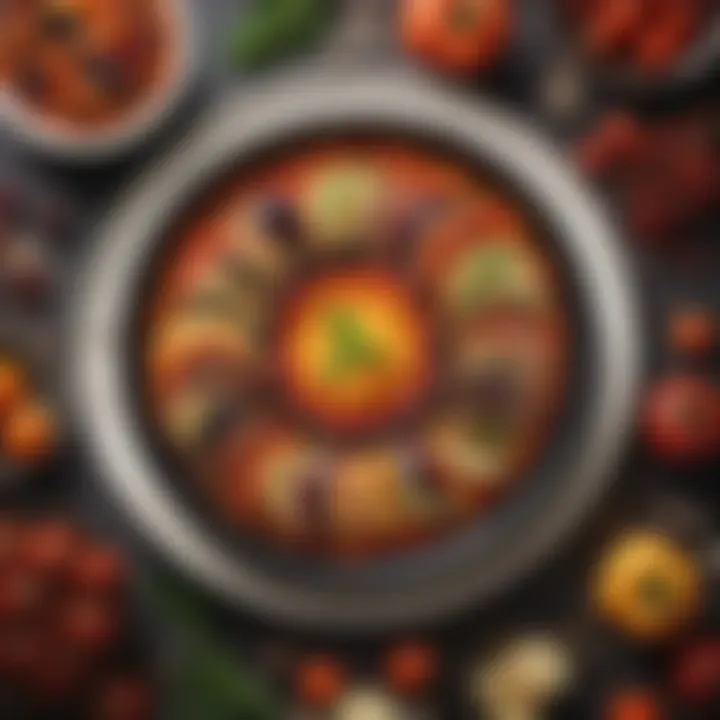
Intro
French cuisine often evokes an image of culinary mastery, where intricate techniques and lavish ingredients take center stage. However, at its core, French cooking celebrates simplicity and the beauty of fresh produce. This exploration aims to present a collection of simple recipes that capture the essence of France without overwhelming the home cook. By using ingredients that are easily sourced and providing straightforward steps, we will open the door to the delightful world of French gastronomy.
The appeal of French dishes lies not only in their taste but also in their cultural significance. Each recipe tells a story, recounting traditions that have been passed down through generations. As we navigate these uncomplicated dishes, we will also uncover the meanings behind them, enriching our understanding of French culinary heritage.
Embracing these recipes might just inspire home cooks to venture beyond their usual meals, inviting a touch of French flair into their kitchens. Ready to don your apron? Let’s take a closer look at a classic French dish that is beloved by many.
Recipe Overview
Ratatouille
A quintessential Provençal dish, Ratatouille is both a colorful vegetable medley and a heartfelt expression of summer in the South of France. Originating from humble beginnings, this dish embodies the philosophy of making the most out of fresh and seasonal ingredients.
Ratatouille is often enjoyed as a side or served atop bread, but it can serve as a main course or even a filling for crepes or savory pastries. Its versatility knows no bounds, making it ideal for cooks at any skill level.
Ingredients List
Main Ingredients
- Eggplant: Choose a firm and shiny one to avoid bitterness.
- Zucchini: A tender squash that brings moisture.
- Bell peppers: Use a mix of colors for more vibrancy.
- Tomatoes: Fresh tomatoes or canned ones work; the key is their ripeness.
- Onion and garlic: These aromatics build the dish's flavor base.
- Herbs de Provence: A blend of dried herbs like thyme, rosemary, and oregano.
Optional Ingredients
- Olive oil: Quality matters; it enhances the final flavor.
- Cheese: Some like to sprinkle feta or goat cheese for added creaminess.
- Olives: Green or black can enhance the salty flavor profile.
Ratatouille showcases a wealth of taste and texture, proving that simple ingredients can create something exceptional. Prepare to dive into a culinary tradition that not only satisfies the palate but also evokes the essence of the French countryside.
Prelims to French Cuisine
French cuisine is more than just food; it’s a cultural touchstone and a narrative woven through centuries. The upcoming sections will take you on a journey through its essence, laying bare the historical influences, core ingredients, and unique cooking techniques that define French culinary art. This exploration is significant not only for enthusiasts of gastronomy but also for anyone wishing to cook simply yet elegantly at home.
By understanding the backdrop of French cuisine, one can better appreciate its simplicity and nuances. This is not about adopting every complex technique or ingredient. Instead, it is about embracing the beauty of using readily available elements to create dishes that resonate with authenticity. Freshness and quality over complexity is what sets French cooking apart. Whether it's a comforting Ratatouille or a rich Quiche Lorraine, the soul of French cuisine invites cooks of all levels to engage.
Historical Context
The roots of French cuisine can be traced back to the Middle Ages when community and resourcefulness dictated mealtime. Over time, various kings and queens influenced the culinary landscape. For instance, the Renaissance brought new ingredients from the New World, like tomatoes and potatoes, sparking a change in flavors and techniques. The Revolution, meanwhile, democratized cooking, moving it away from exclusivity toward a broader appreciation.
As you learn these simple recipes, it’s vital to recognize how history shaped them. Each dish stores stories from the past, echoing sentiment of home, culture, and celebration. That's why when you whip up a simple dish, you are partaking in a tradition that spans generations.
Core Ingredients
Every classic French dish is built upon a few key ingredients, showcasing the art of simplicity with bold flavors. Here are some staples you might gather:
- Herbs de Provence: This mix uplifts dishes, lending that unmistakable French aroma.
- Garlic: A staple across many recipes, it brings depth and warmth.
- Butter: Not just for greasing pans; it’s the heart of French sauces and pastries.
- Cream: Essential in many desserts and sauces, it adds richness.
- Seasonal Vegetables: Fresh produce keeps dishes vibrant and healthy.
Using quality ingredients will help you develop a more profound love for cooking, aligning with the French philosophy of valuing fresh produce from local markets.
Cooking Techniques
When it comes to French cuisine, technique speaks volumes. The way you handle ingredients often elevates a dish from mundane to extraordinary. Here are some fundamental techniques:
- Sautéing: Quick and efficient, this cooking method brings out the depth of flavors.
- Braising: When you want tenderness, braising slowly in flavorful liquids works wonders.
- Emulsification: This technique is crucial for sauces, combining elements like oil and vinegar into something velvety and cohesive.
Each technique introduces skills that can help in creating dishes with depth and character. Try them, test and experiment, and witness the transformation of ordinary ingredients into something magical.
"The art of cooking is about taking simple ingredients and crafting them with heart – that’s the French way."
These aspects combined create a bridge to understanding French cuisine as not just food but as a living legacy. Engaging in these practices allows any aspiring cook not only to replicate classic dishes but to make them their own.
Essential French Dishes
In the realm of French cuisine, essential dishes act as the soul and heart of its rich culinary landscape. Simple yet elegant, these recipes not only highlight the diversity and depth of French cooking but also represent the cultural significance behind each creation. Mastering these dishes allows home cooks to imbibe a slice of French tradition by using accessible ingredients. The beauty of French cooking lies in its ability to turn the ordinary into the extraordinary, often through techniques and flavor combinations that may initially seem intricate but are quite achievable. The essential dishes covered in this section serve as a gateway to exploring the vast universe of flavors and textures that this cuisine has to offer.
Ratatouille
Ingredients Overview
The foundation of any good dish is its ingredients, and ratatouille is no exception. This vegetable medley primarily showcases ingredients such as eggplant, zucchini, bell peppers, onions, and tomatoes. Each item brings its unique taste and texture to the table, creating a colorful mosaic that's as pleasing to the eyes as it is to the palate. Moreover, these vegetables are not only flavorful but are also widely available, making ratatouille a popular choice in kitchens around the world.
What makes the ingredients for ratatouille particularly advantageous in this article is their health benefits. Loaded with vitamins and antioxidants, this dish captures the essence of French cooking while keeping health considerations in mind. Additionally, each ingredient can be easily adjusted based on local produce or personal tastes, making it an adaptable recipe.
Step-by-Step Preparation
Preparing ratatouille is akin to painting a canvas with fresh vegetables. Start by chopping the vegetables into uniform sizes; this offers visual consistency and ensures even cooking. The unique feature of ratatouille's preparation lies in the layering of flavors. Sauteeing the onions and bell peppers first creates a harmonious foundation, followed by the addition of the remaining vegetables. This step-by-step process allows each ingredient to express its personality, resulting in a dish that’s more than the sum of its parts.
For those looking to simplify their culinary routine, this preparation method stands out as a beneficial approach. It encourages you to engage actively with each stage of cooking without feeling overwhelmed, thereby making the overall experience fulfilling.
Serving Suggestions
When it comes to serving ratatouille, the possibilities are endless. You can present it hot or cold, depending on your preference and occasion. One popular way is to serve it alongside crusty French bread, which complements the dish while soaking up its vibrant flavors. Additionally, serving it as a side dish with grilled meats or fish adds an exciting depth to your meal.
The unique aspect of ratatouille's presentation is that it can be elegantly plated or simply tossed in a bowl. Not only does this versatility cater to different dining experiences, but it also allows you to showcase your creativity in the kitchen.
Quiche Lorraine
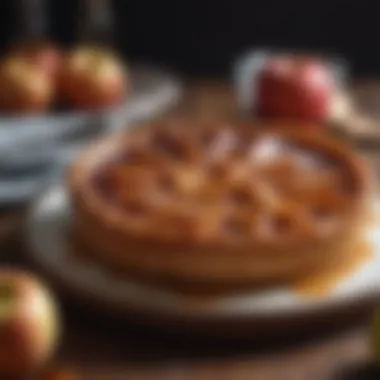
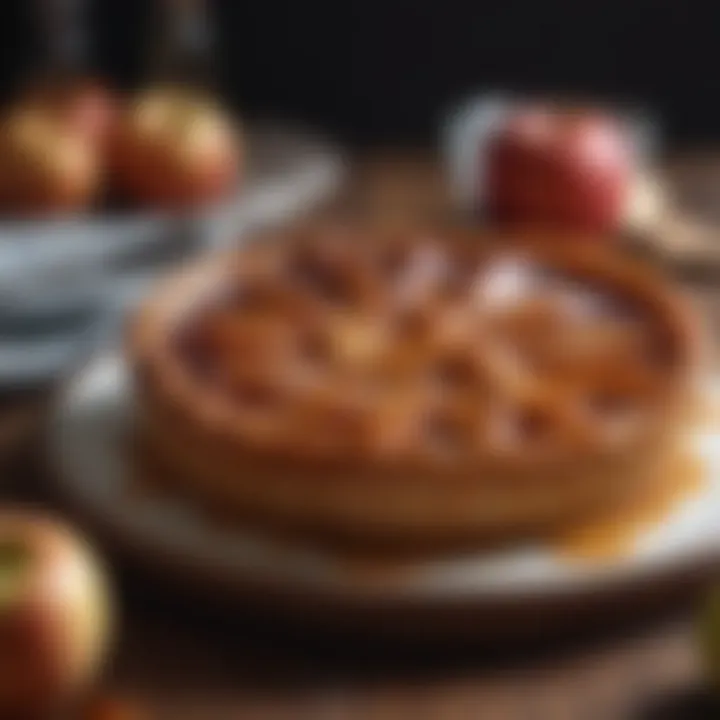
Crust Preparation
The crust serves as the bedrock for quiche Lorraine. Typically made from a buttery pastry, its preparation is crucial to achieving that perfect flaky texture. The key characteristic of a well-prepared crust lies in the balance of cold ingredients and gentle handling, ensuring minimal gluten development.
A noteworthy aspect of crust preparation is the ability to introduce various flavors by infusing herbs or spices into the dough. While there is a learning curve, mastering it becomes beneficial, especially considering the satisfaction that comes with creating your own baked goods from scratch.
Filling Variations
Great quiche is as much about its filling as it is about the crust. Traditional quiche Lorraine is made with bacon and cheese, but the potential for variation is boundless. From sautéed mushrooms and fresh spinach to seasonal vegetables, you can craft fillings tailored to personal preferences or dietary needs.
This adaptability not only allows for culinary creativity but also means you can make use of leftover ingredients, keeping waste to a minimum. While some fillings require specific preparation steps, many simply need to be mixed together, providing a welcoming environment even for novice cooks.
Baking Tips
The secret to a perfect quiche is in the baking. Temperature control is vital; starting at a high temperature to set the crust before reducing it to allow the filling to cook gently is a technique that brings success. Another useful tip is to ensure you blind-bake the crust before adding the filling. This technique prevents the crust from becoming soggy – a common pitfall in quiche-making.
Emphasizing these baking tips raises confidence levels for those attempting their first quiche. They illustrate how small adjustments can lead to delicious results, making this dish a favorite among both seasoned and novice cooks.
Coq au Vin
Ingredient Selection
When it comes to coq au vin, the choice of ingredients is paramount. Traditionally using rooster, many recipes opt for chicken for practicality. The unique selling point here is the slow braising in red wine, which tenderizes the meat while infusing it with deep flavors.
Choosing quality wine for the dish is a game-changer, affecting the final taste significantly. Additionally, the combination of aromatics such as mushrooms, garlic, and herbs enhances the depth further, turning this comfort dish into a gourmet experience.
Marination Process
Marinating the chicken in red wine not only imparts flavor but helps in tenderizing the meat. The beauty of this marination process is that it can be done ahead of time, which enhances the convenience for busy cooks. Moreover, the longer the marination, the more pronounced the flavors will become—a significant advantage for meal prep enthusiasts.
An important consideration here is balancing time; while marinating adds depth, it requires patience and foresight. This aspect invites home cooks to participate actively in the dish’s journey.
Cooking Methodology
The methodology behind cooking coq au vin is where magic happens. After browning the marinated chicken, the addition of vegetables and herbs creates a comforting and inviting aroma that fills the kitchen. Slowly reducing the sauce allows the flavors to meld beautifully.
While some may find the lengthy process daunting, it becomes immensely rewarding, especially when you taste the final product. The methodology teaches that great depth in flavor often requires time and attention, establishing a connection between the cook and the dish.
Tarte Tatin
Caramelization Techniques
Tarte Tatin is famous for its upside-down presentation, achieved through caramelization. This technique of cooking sugar until it forms a rich amber sauce creates that delightful balance of sweetness and acidity with the cooked fruits.
The unique feature of great caramelization is in the timing; too little and your fruit won't have that luscious coating, too much and it turns bitter. Having a good foundation in this technique is a boon for any pastry enthusiast, as it’s transferable to many other desserts and dishes.
Pastry Options
When creating tarte Tatin, the choice of pastry can vary between puff pastry or a simple shortcrust dough. Both options present unique textures and flavors, allowing cooks to select according to preference or occasion.
This flexibility underlines the creative scope in dangling with different pastry options, thereby breaking the notion that sticking to tradition is essential. Thus, making it super helpful for those on special diets or those who just want to experiment while keeping the essence of the dish.
Presentation Ideas
Presentation is the final touch to tarte Tatin, as its beauty comes from its upside-down nature. Once flipped, drizzling caramel sauce over the top enhances its appeal. Additionally, garnishing with a dollop of whipped cream or a sprinkle of nuts takes it up a notch.
This aspect stresses the importance of visual aesthetics alongside taste, which is crucial in any culinary encounter. It encourages cooks to consider how presentation can elevate a dish, not merely focusing on flavor alone.
Simple Sauces to Elevate Dishes
In the realm of French cooking, sauces are the unsung heroes. They can transform a simple dish into something extraordinary, enhancing flavors and adding richness. The ability to make a few classic sauces is a skill that can elevate your culinary game tremendously. Whether you’re topping a steak, dressing a salad, or serving with vegetables, having a selection of go-to sauces can give your meals a delightful edge. Plus, they’re often simpler to prepare than one might think, making them perfect for home cooks looking to amp up their kitchen repertoire.
Béarnaise Sauce
Key Ingredients
Béarnaise sauce is a true classic, shining with its herbaceous flavor profile. The primary components include butter, egg yolks, tarragon, and white wine vinegar. Each of these ingredients plays a vital role.
- Butter provides the glorious richness that defines this sauce, while the egg yolks give it a silky texture.
- The tarragon is where the magic happens: its anise-like flavor brings a fresh brightness, cutting through the richness of the butter.
- The white wine vinegar adds acidity, which balances the flavors.
These key ingredients make this sauce a popular choice for steak and fish. Just be mindful of the heat; too hot, and you risk scrambling the eggs.
Preparation Steps
Making Béarnaise sauce is more about patience than complexity.
- Begin by reducing white wine vinegar with shallots and tarragon. This step is crucial as it infuses the sauce with flavor.
- Separate the egg yolks and whisk them gently, then add the reduction slowly while whisking. This will cook the yolks without scrambling them.
- Finally, incorporate the warm melted butter slowly until it emulsifies into a creamy sauce.
This process may seem daunting, but with practice, it becomes second nature. The key here is to maintain a low and steady heat; too high can lead to uneven cooking. The reward for your diligence is a rich, flavorful Béarnaise that elevates anything it touches.
Pairing Recommendations
Béarnaise sauce pairs beautifully with numerous dishes. Grilled steaks are often the frontrunner. However, don't overlook how it complements roasted vegetables or a simple poached fish. Its creamy texture and rich flavor provide a satisfying contrast to lean proteins and earthy vegetables.
A tip to keep in mind is to adjust the level of tarragon depending on your personal taste. Some may prefer a lighter hand with the herb, whereas others may want it to be in the foreground. Experimentation can lead to your personal twist on this classic.
Roux-Based Sauces
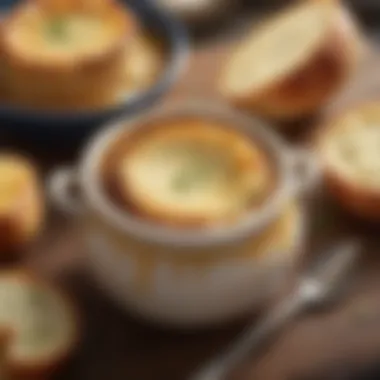
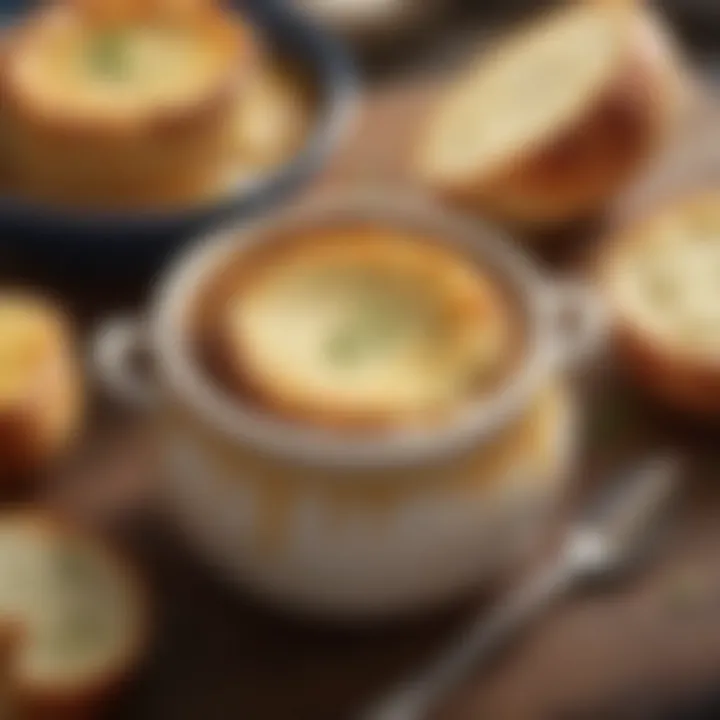
Creating a Basic Roux
A roux serves as the foundation for many sauces. It’s a simple mixture of equal parts flour and fat—often butter. The beauty of a roux lies in its versatile nature.
- Start by melting the butter in a heavy saucepan over medium heat.
- Once melted, add an equal amount of flour. Stir constantly until it forms a paste.
- Cook for several minutes, allowing it to deepen in color without burning. This technique pulls out a nutty flavor from the flour.
A well-made roux not only thickens sauces but also adds depth to flavors. Just remember that a darker roux will yield a more robust flavor, while a lighter roux keeps things delicate.
Common Variations
Roux isn’t one-size-fits-all. Different variations can cater to various dishes:
- White roux: Used for creamy sauces like béchamel.
- Blond roux: Perfect for velouté sauce, which is a lighter option.
- Brown roux: Ideal for adding depth to darker sauces like Espagnole.
These variants allow you to customize the base for your sauces, but remember: each type has its specific usage, influencing the overall flavor and texture.
Usage in Dishes
Roux-based sauces are immensely versatile. You can use them to enhance everything from macaroni and cheese to soups. The trick is knowing when to add ingredients to prevent lumping. Generally, add your broth or milk gradually, whisking continuously.
The ability to create a basic roux expands your sauce-making capabilities and unlocks a whole new world of flavors. Incorporating these techniques into your cooking practice can make a world of difference in your French culinary journey.
French Breads and Pastries
French breads and pastries are the heart and soul of any culinary exploration of France. They embody a craftsmanship that's deeply rooted in tradition, showcasing the art of baking that has evolved over centuries. These delightful creations serve as the foundation of countless dishes, elevating even the simplest of meals with their unique flavors and textures. In this segment, we'll delve into two iconic French baked goods: Baguette and Madeleines. This journey won't just expand your recipe collection; it will enhance your appreciation for the meticulous methods that make French cuisine exceptional.
Baguette
Dough Preparation
The dough preparation is a crucial cornerstone of creating a perfect baguette. Unlike typical bread, the baguette demands a precise ratio of farines, water, salt, and yeast to cultivate its unique crust and airy crumb. The key characteristic here is the long fermentation process, which gives the bread its distinctive taste and texture. This slower rise contributes to the development of flavor, making it not just bread but an experience.
One unique feature of dough preparation is the autolyse method, where flour and water are mixed and left to rest before adding yeast and salt. This technique allows for better gluten development, resulting in a lighter baguette. However, it requires patience, as you can't rush the fermentation process. For home cooks, this may seem daunting, yet the reward of a crispy, golden crust and soft inside makes it a worthwhile endeavor.
Baking Process
The baking process is another pivotal step that contributes to the baguette's iconic status. A high-temperature oven is essential for creating that perfect crust. The typical range of 475-500°F helps achieve a deep, brown exterior while keeping the inside fluffy. What sets this process apart is the use of steam in the oven; it helps produce a crisp crust that holds its shape beautifully.
One of the advantages of this process is the simple setup; you don’t need fancy equipment. A pan filled with water at the base of your oven can do the trick, yet timing is everything. A well-timed removal of the steam in the final minutes of baking can secure that golden crust, which many claim makes or breaks the loaf.
Serving Ideas
Serving ideas for a freshly baked baguette are as varied as the regions of France itself. You might think of the classic pairing with traditional items like butter or cheese, but it can also shine in more creative presentations. Slices can be toasted and topped with olive oil, garlic, and fresh tomatoes for a delightful bruschetta or used as a base for an elegant charcuterie board.
The beauty of serving a baguette lies in its simplicity and versatility. From casual family dinners to more formal gatherings, its ability to complement any dish is unmatched. An added benefit is that it can be made in advance and frozen, allowing you to enjoy its freshness even on busy days.
Madeleines
Batter Techniques
When it comes to madeleines, batter techniques are essential to crafting those delightful shell-shaped treats. The secret lies in the technique of folding in the beaten eggs gently into the flour mixture without deflating the air. This is what gives madeleines their recognizable light and airy texture.
It’s a rather important part of the process, as overmixing can lead to dense, less appealing cakes. The unique aspect of the batter is the resting phase; allowing the batter to sit in the fridge for at least an hour can enhance the flavors and texture, making them even more delightful.
Baking Tips
Baking tips are vital for achieving the perfect madeleine. First and foremost, greasing the madeleine pan is non-negotiable; a well-greased pan ensures that your cakes release easily, preserving their lovely shape.
One notable characteristic of madeleines is their reaction to heat. Baking at a higher temperature for the first few minutes helps create their signature hump really quickly, followed by lowering the temperature for the remaining time to ensure they bake through. However, the timing should be carefully monitored, as underbaking can lead to gummy centers.
Flavor Variations
Flavor variations are a delightful aspect of madeleines, allowing for creativity and personalization. While the classic version is made with lemon zest, other flavors can bloom, such as chocolate, almond, or even fragrant lavender.
The key characteristic of these variations is their adaptability; you can mix and match according to your taste or the season. Each variation brings out distinct notes, offering a range of experiences for the palate. Yet, keep in mind that strong flavors may overshadow the delicate nature of the madeleine, so a subtle hand is always recommended.
Ultimately, French breads and pastries not only showcase the beauty of French culinary heritage but also offer easy entry points for aspiring cooks. By exploring the art behind these creations, anyone can bring a taste of France into their home.
Traditional French Desserts
Traditional French desserts hold a prominent place in the tapestry of French cuisine, serving not only as endings to meals but also as showcases of culinary artistry. These desserts embody the culture and history of France, reflecting the nation’s love for high-quality ingredients and precise techniques. In this article, we will delve into two celebrated French desserts: Crème Brûlée and Mousse au Chocolat. Each dish offers a glimpse into the French ethos of simplicity mingled with sophistication.
Here, we’ll explore why these desserts matter and how they can enhance your culinary journey while being accessible enough to attempt at home. They not only satisfy a sweet tooth but also provide opportunities to hone cooking skills, learn about texture, flavor balance, and presentation, which are key in French cuisine.
Crème Brûlée
Custard Preparation
The custard is at the heart of Crème Brûlée—it’s the soul of the dish, you might say. This part involves blending cream, egg yolks, sugar, and vanilla to create a silky mixture that transforms into a wonderfully rich dessert with just the right amount of sweetness. The gentle heating and careful mixing ensure that it turns out smooth without any undesirable lumps.
What makes custard preparation successful is the control over temperature. Cooking the mixture slowly allows its flavors to develop wholly. Some people get a little jittery at this step, fearing they will overcook, leading to curdled custard. However, with the right technique and a watchful eye, it's easy to achieve a perfect custard that is beneficial to the dish.
The unique feature lies in its versatility; one can use different flavorings like lavender or orange zest to add a personal touch. While a disadvantage could be that it requires a bit of patience, the end result—a beautifully set cream—is worth the wait.
Caramelizing Sugar
Caramelizing sugar is the fun part that tops off Crème Brûlée, creating that signature hard shell. It involves sprinkling sugar on top of the cooled custard and applying heat, usually with a torch or broiler. The charm of this step comes from the contrast between the creamy base and the crisp top, which is a hallmark of this dessert.
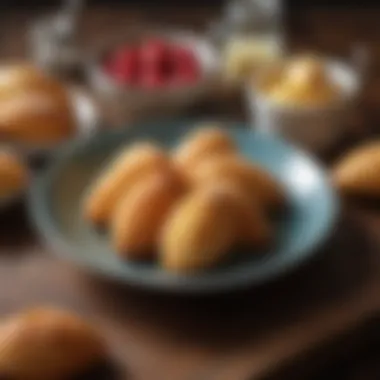
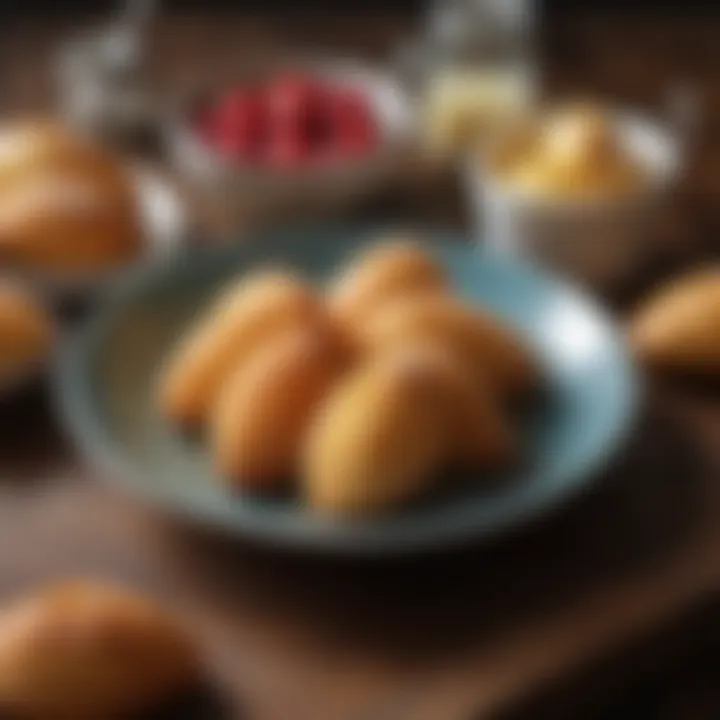
What makes caramelizing sugar a popular choice? It adds texture and an aromatic dimension, enhancing the overall dessert experience. The excitement that comes from cracking the sugary layer with a spoon is a simple pleasure in itself.
However, one must be cautious; it’s easy to burn the sugar if not monitored closely. While it can be a tricky skill to master, the satisfaction of achieving the perfect caramel shell is undeniably rewarding.
Presentation Techniques
When it comes to presentation, Crème Brûlée shines brightly. Often served in shallow ramekins, the visual appeal is enhanced through its shiny caramel top that glints invitingly. A simple garnish, like fresh berries or a sprig of mint, enhances the dessert's aesthetic without overwhelming the classic look.
The beauty of these straightforward presentation techniques is that anyone can execute them without needing fancy gadgets. This makes it feasible for both budding chefs and those with more experience to create an appealing dish that’s more than just a treat for the taste buds.
The downside here might be that it’s so visually striking that it can lessen one’s desire to dig in, if only for a moment!
Mousse au Chocolat
Ingredients Selection
Mousse au Chocolat is a luscious dessert that relies significantly on the quality of its ingredients. The selection of chocolate is critical—dark chocolate is commonly preferred for its robust flavor, but the richness of milk chocolate has its merits too.
Choosing high-quality chocolate leads to a beneficial finished product, as the flavor becomes bolder and more authentic. Just as with the custard for Crème Brûlée, what you put in really counts. This uniqueness gives Mousse au Chocolat an edge over other desserts, as it allows for personal expression based on taste preferences.
However, keep in mind that using very cheap chocolate may lead to a disappointing outcome; it’s a classic case of you get what you pay for.
Mixing Method
The mixing method varies depending on the desired texture. Some people prefer to fold whipped egg whites into the chocolate mix to achieve that light and airy feel, while others might opt for a denser texture by blending everything together. This aspect of Mousse au Chocolat is crucial—it defines the creaminess and mouthfeel of the dessert.
The magic happens in how you combine those elements. Lightly folding the chocolate into the whipped egg whites can result in an airy mousse that feels almost ethereal on the palate. A point to note is to not over-mix; you’ll want to keep as much air as possible.
While the technique may pose a challenge for novice cooks, it serves as an excellent exercise in balancing care and speed, and mastering it is quite rewarding.
Chilling Requirements
Once mixed, Mousse au Chocolat needs time to rest in the fridge, allowing flavors to meld and the texture to set just right. It’s a straightforward requirement but one that tests patience as you await its transformation.
The chilling aspect ties it all together, as it’s essential for developing that firm yet silky consistency. A well-chilled mousse offers a satisfying contrast to the lightness of the air whipped into it, capturing the essence of what a chocolate mousse should be.
The unique disadvantage of this step might be the temptation to skip the chilling phase in a hurry to taste the results. However, doing so could ruin the experience, drawing out a good balance of flavors and texture.
Healthier French Alternatives
Exploring healthier French alternatives offers a fresh perspective on traditional recipes without sacrificing flavor. It’s essential to recognize that not every dish has to be laden with calories to be enjoyable. This section would touch on practical methods and modifications in two classic French dishes, aiming for a balance between indulgence and nutrition. By making simple changes, you can not only enhance the nutritional profile of beloved recipes but also make them more accessible to those concerned about health.
Vegetable Ratatouille
Nutrition Overview
The charm of vegetable ratatouille lies in its vibrant array of veggies like eggplant, zucchini, bell peppers, and tomatoes. These ingredients form the backbone of the dish, packing vitamins, minerals, and fiber. The key feature here is its low calorie count yet high nutritional value, making it a popular choice for health-conscious eaters. Each vegetable contributes unique nutrients; for instance, tomatoes offer lycopene, an antioxidant hailed for its potential health benefits. The dish can be a way to incorporate more vegetables into one's diet while keeping it exciting and colorful.
Preparation Adjustments
When it comes to prepping ratatouille, the method can vary. Many traditional recipes call for sautéing in rich oils, which can add extra calories. One beneficial adjustment is roasting the vegetables instead. This technique brings out their natural sweetness while using less fat, keeping the dish lighter. Moreover, it allows for a lot of flexibility—almost any vegetable can join the mix, making it easy to adapt to seasonal produce or personal preferences. This versatility is a fundamental advantage for cooks looking to try something different without straying too far from the classic.
Serving Suggestions
Ratatouille is not just a side dish; it can be the star of the show. Served warm or cold, it's great on its own or paired with lean proteins such as grilled chicken or fish. Another excellent idea is to serve it over whole grains like quinoa or brown rice for a fulfilling meal. Adding a sprinkle of fresh herbs before serving can elevate the dish even further. The beauty of this dish lies in its flexibility; it fits seamlessly into various dietary lifestyles, thereby making it a suitable option for gatherings where dietary preferences vary.
Whole Wheat Quiche
Ingredient Substitutions
Whole wheat quiche is another excellent example of how one can enjoy French classics in a healthier manner. Utilizing whole wheat flour instead of standard white flour for the crust is a critical adjustment, as it provides more fiber and essential nutrients. This choice not only enhances the nutritional quality but also adds a richer flavor profile that complements various fillings. Including alternatives such as low-fat cheese or more vegetables instead of heavy cream further contributes to the quiche's healthful characteristics.
Health Benefits
Emphasizing health benefits, using whole wheat does wonders for digestion. The high fiber content aids in promoting satiety, helping to prevent overindulgence. Additionally, whole grains are linked to various health advantages, like reduced risk of heart disease and better weight management. The key point here is that integrating whole wheat into daily meals does not feel like a sacrifice but rather an improvement—offering a sense of satisfaction without the guilt.
Baking Tips
When baking whole wheat quiche, there are a few things to keep in mind. Whole grain flour can yield a denser crust, so adding a bit of fat or moisture can balance this out. Using an egg wash before baking not only grants a beautiful golden color but helps create a barrier that prevents the crust from becoming soggy. Timing is also crucial; keeping an eye on the quiche towards the end of its baking time ensures it doesn't overcook and lose its appealing texture.
Thorough preparation and careful adjustments can transform traditional French recipes into lighter alternatives, making them suitable for a wider audience.
Ending: Embracing French Simplicity
As we arrive at the close of our culinary exploration, it becomes clear that French cuisine doesn’t have to be a complex tapestry woven from hard-to-find ingredients or elaborate techniques. In fact, at the heart of French cooking lies a celebration of simplicity. The elegance of a dish does not always stem from its intricacy but often emerges from its authenticity and quality of components. In this context, simple French recipes can perfectly embody sophistication while still being accessible to the average home cook.
Focusing on essential techniques and fresh ingredients opens the door for many to experience the joys of French cooking. None of these recipes require a chef’s hat or access to a Michelin star kitchen. Instead, they encourage exploration and experimentation with local materials, infusing a bit of one’s culture or preferences into each dish.
Summary of Key Points
- French cooking often prioritizes the natural flavors of ingredients, making simplicity paramount.
- Simple dishes like Ratatouille and Quiche Lorraine are not only incredibly tasty; they also showcase how fewer ingredients, when treated properly, can yield delicious results.
- Each recipe in this collection highlights the importance of technique and preparation suited for cooks of all skill levels.
- The cultural significance of every dish lends depth to the cooking process and deepens engagement with the cuisine itself, making it more than just a meal but an experience.
By adopting a mindset centered around simplicity, home cooks can develop their skills while gaining confidence in the kitchen. This leads naturally to a more enjoyable cooking experience, embracing the beauty of the French ethos: less is more.
Encouragement to Experiment
Diving into French recipes can be a rewarding journey—a canvas awaiting your personal touches. Embrace the call to experiment. Maybe you have a bit of leftover goat cheese or wilted greens in your fridge; toss them in a Quiche Lorraine for a unique twist. Or if you prefer to amp up flavors, try adding herbs de Provence to that basic Ratatouille recipe.
Cooking should free your creativity and engage your senses. Here are a few tips to stir your imagination:
- Start Simple: Don't feel the pressure to create a five-course meal. Begin with one dish—perfect it, then branch out.
- Substitute Wisely: If fresh herbs aren’t available, experiment with dried alternatives, or even other spices that might suit your taste better.
- Personalize: Each dish you prepare has the power to reflect your taste. Whether you like it spicy or creamy, add that personal flair.
- Learn from Mistakes: If something doesn't turn out as planned, instead of disappointment, consider it a learning experience. Adjusting on-the-fly will only enhance your skills moving forward.
By welcoming mistakes as stepping stones rather than stumbling blocks, the kitchen transforms into a lab where one discovers new states of flavor. After all, the true essence of culinary art lies in its adaptability, and that rhythm between tradition and innovation is what brings French recipes to life. So grab your apron and sauté your way through flavors, the French way!







